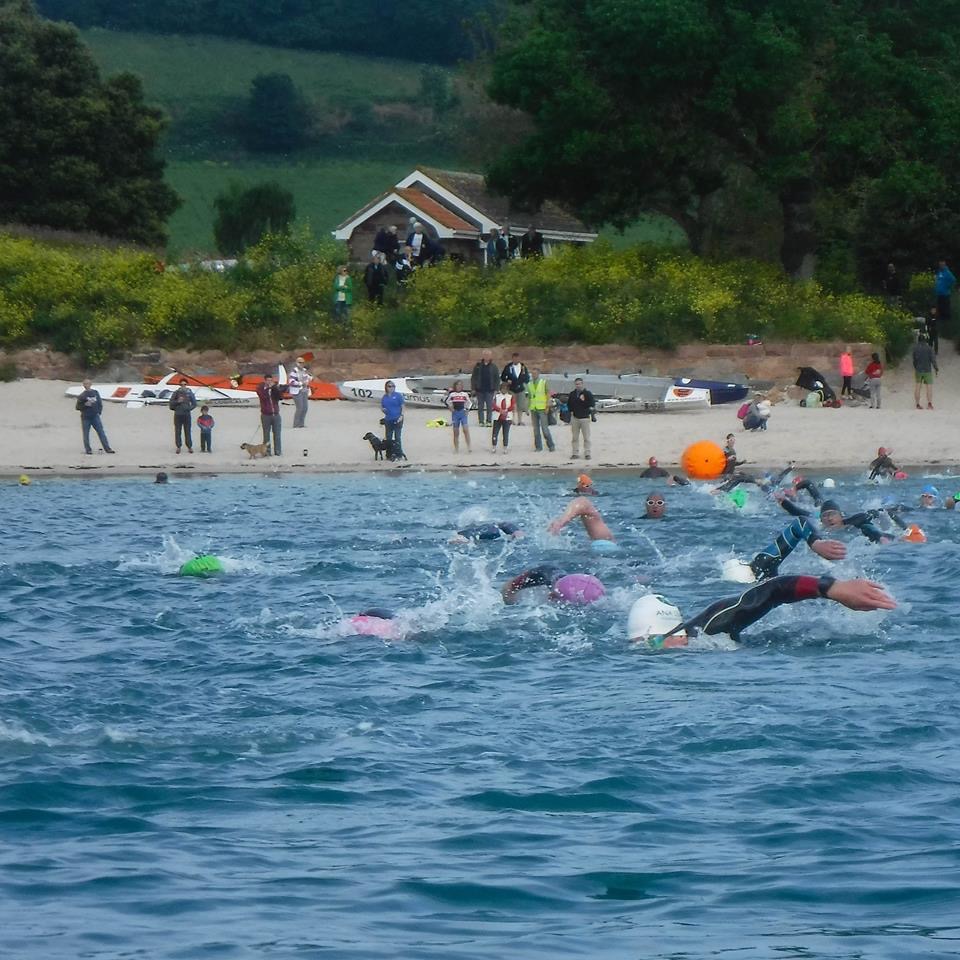We are very grateful to have the support of Mark Morrison from Jersey Aquatic Rescue Club, whose members are providing safety cover for our opening and closing events. We asked Mark to give us his top tips for staying safe in the sea.
Never swim alone. First and foremost, never under any circumstances ever swim alone. Did I mention never-ever? Would you SCUBA dive alone? Of course not! Whenever you’re in the water, always swim with a buddy, even if there is a lifeguard. A lifeguard cannot be considered a buddy because his primary duty is to protect and prevent hazardous situations for all patrons, not just you.
Check water conditions before entering. Is it safe for everyone to swim? Are there hazards not immediately visible, such as potential boat traffic? Is the water quality poor or dangerous? Are there any indications that signs could be missing? Could those have been signs warning of a “No Swim” area? Survey the area before you enter and know what to look for.
Have a plan for emergencies. What is your plan should something happen to you or your buddy? Does someone else know where you’re going? Will someone be watching from shore, ready to take action in the event you need assistance? Plan for everything and eliminate as much uncertainty as possible.
Understand currents, rip currents, and such. Currents are another variable of open water swimming versus pool swimming. Sometimes you won’t know how strong or which direction the current pulls until you get in the water. This topic alone warrants a whole article, but for now, keep the following tips in mind:
If it looks quick, it is. Be careful, exercise extra caution, and be smart about deciding whether to get in the water.
Ride it ‘til it weakens. If you get caught in a rip current—strong columns of water that rush out to sea and can carry a swimmer a great distance from shore very quickly—your best bet is to ride the current until it weakens, then swim out of it, parallel to shore. Once you’re past the rip, you can turn and swim back into shore. If you try to fight the current or swim against it, you will lose.
Stay calm, be safe, and be aware. Currents happen and your best defense is to always remain calm and aware.
Know your surroundings. Be acutely aware of your surroundings. Boats, swimmers, marine life, variable weather and water conditions and a lot of other elements can threaten your swim. Stay vigilant and get out of the water if you feel threatened.
Watch the weather. If the forecast calls for rain or thunderstorms, it’s prudent to not swim. That said, meteorologists are rarely 100% spot-on and weather changes frequently. Double check credible weather forecasting services before you swim. If you hear thunder before or during your swim, get to shore and a safe environment immediately. You do not know how quickly a storm might be moving or where it’s headed, so remove yourself from the water and take cover.
Be aware of how cold water can have an effect on your ability to swim. You may be a very competent swimmer in an indoor pool, but 25 meters in cold water in the sea even with a wet-suit can feel like a real slog if your muscles stop working properly.
Top ten open water safety tips
The conditions at open water sites change constantly:
- Always look for warning and guidance signs
- Swim parallel with the shore, not away from it
- Avoid drifting in the currents
- Do not enter fast flowing water
- Be aware of underwater hazards
- Get out of the water as soon as you start to feel cold
- Never enter the water after consuming alcohol
- Where possible enter the water in areas with adequate supervision and rescue cover
- Always take someone with you when you go into or near water. If something goes wrong they will be able to get help
- If someone is in difficulty in the water shout reassurance to them, shout for help and call the emergency services (call 999 remember you can ask for the coastguard)

